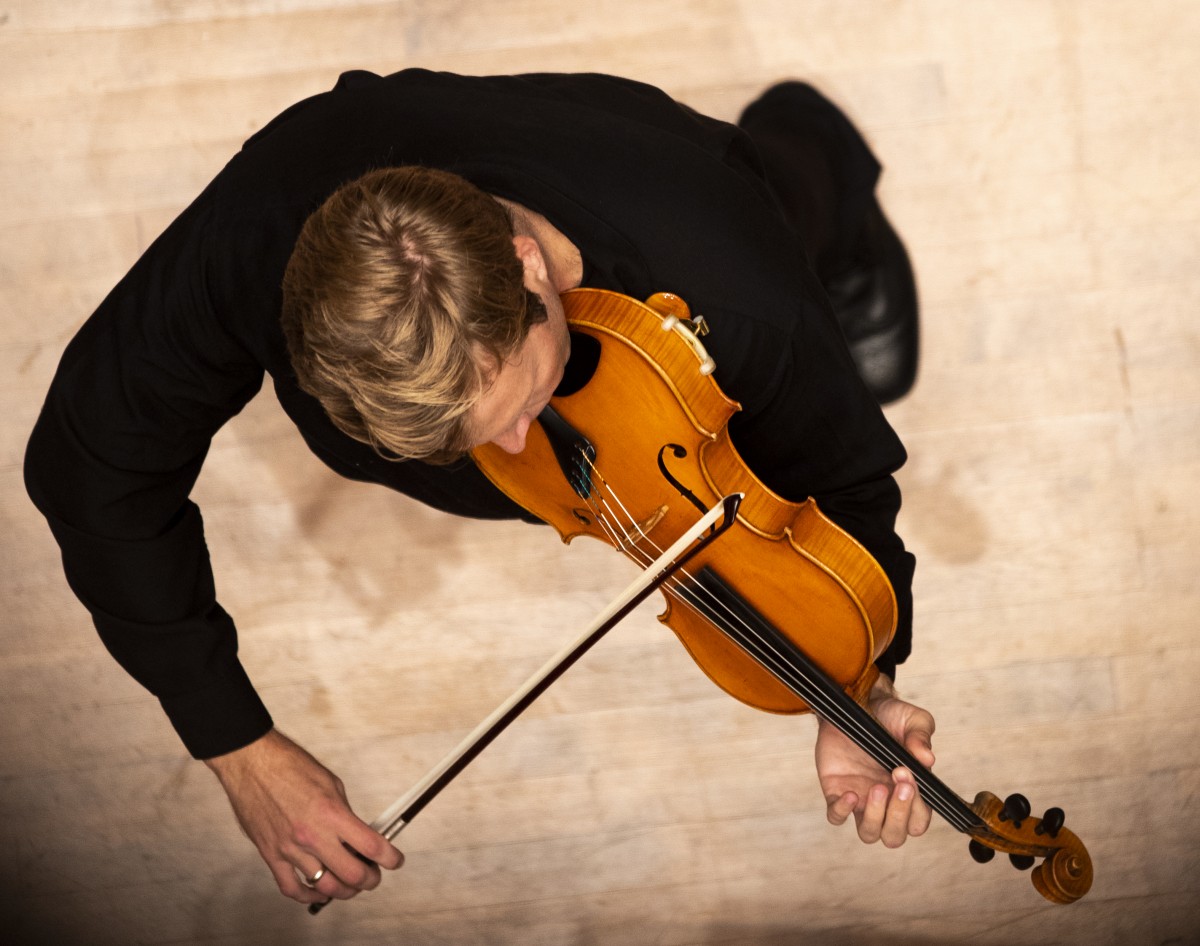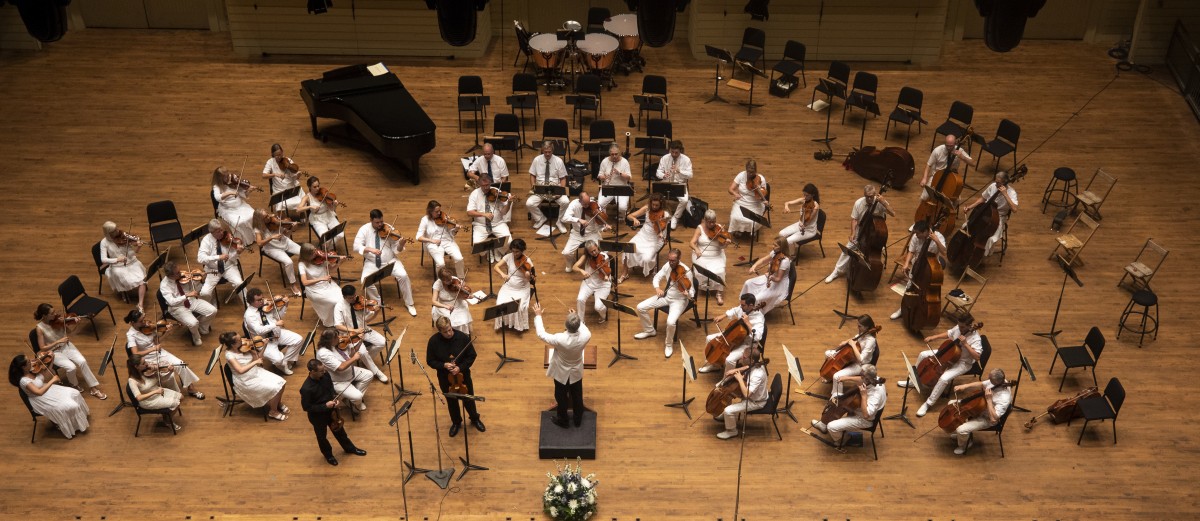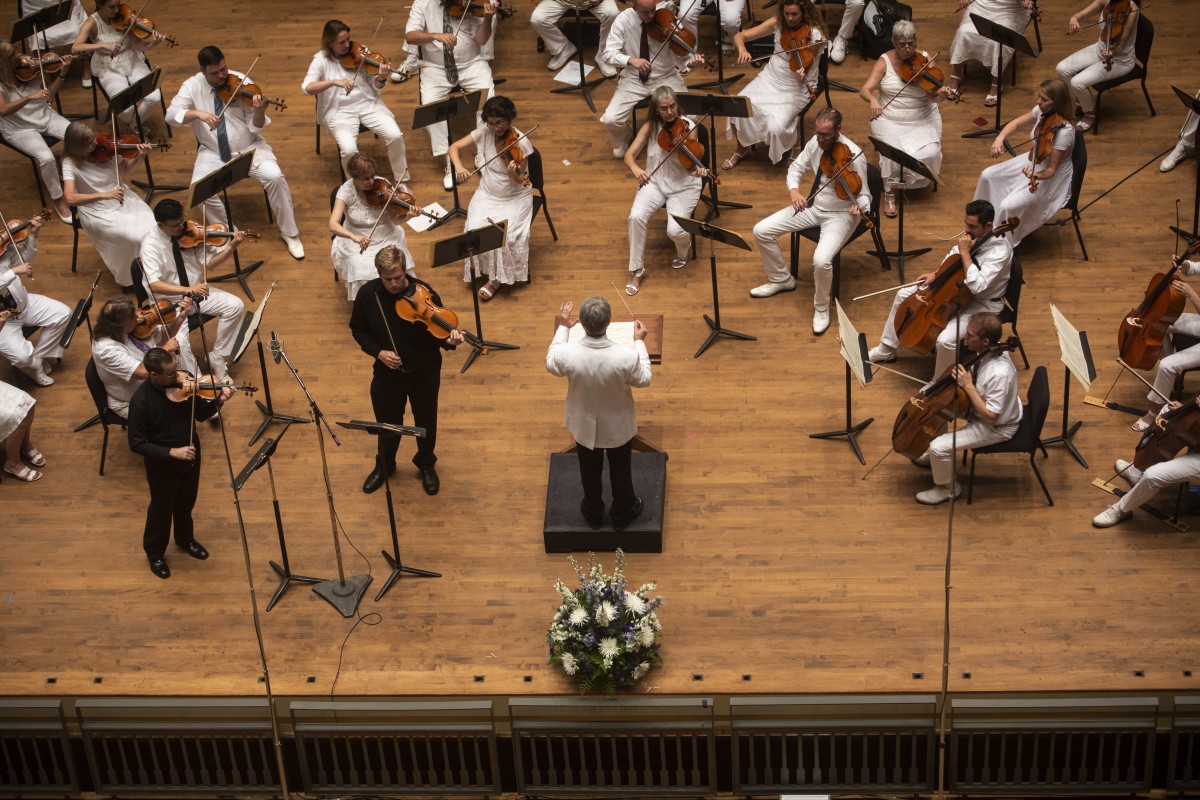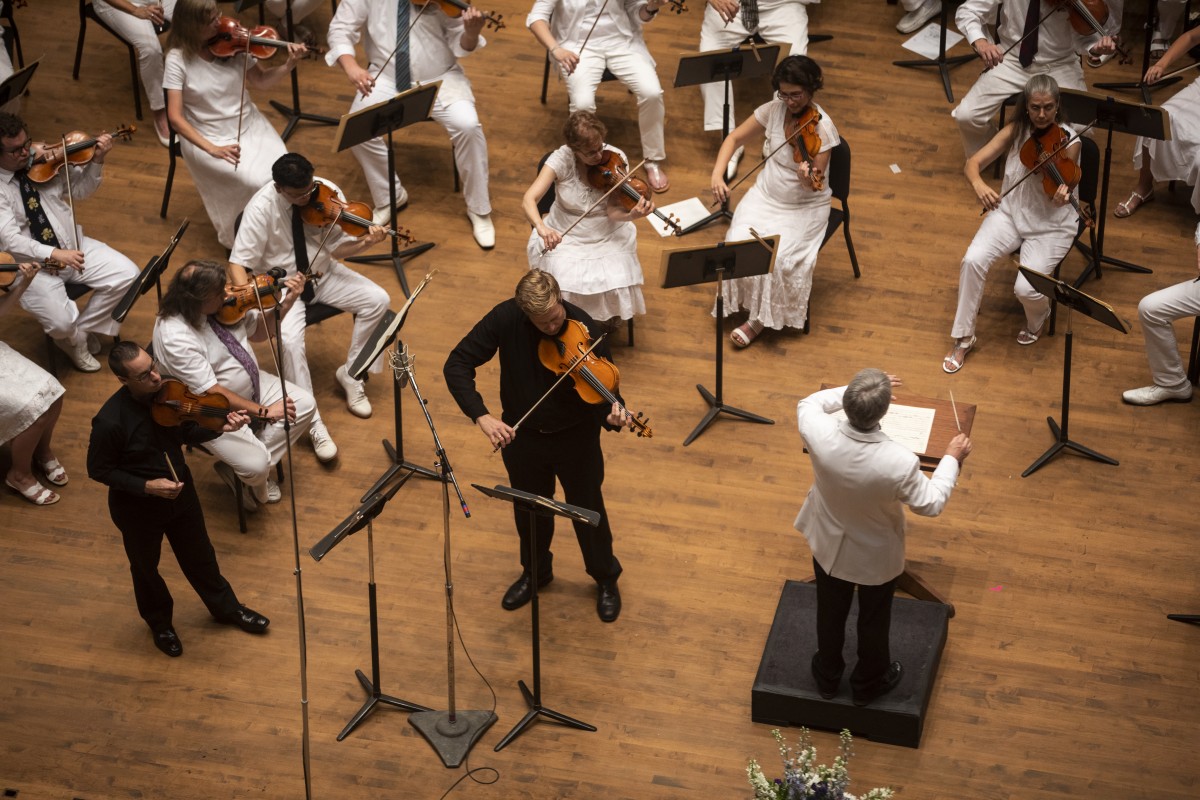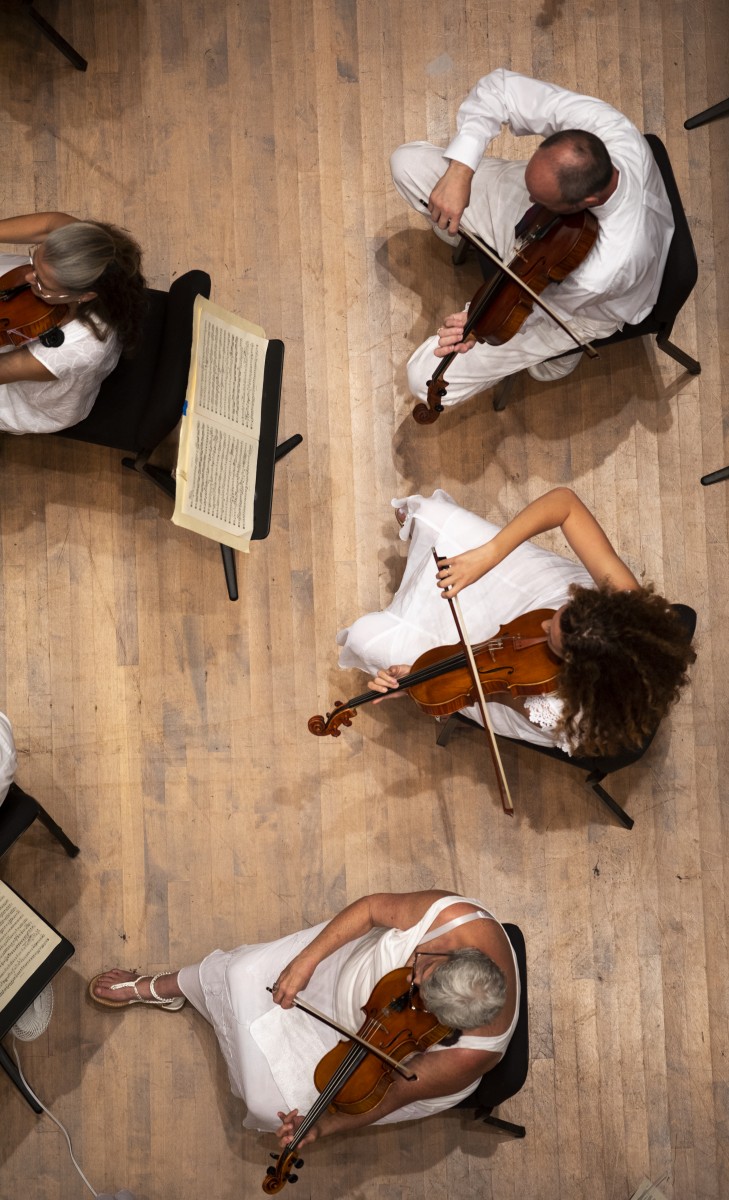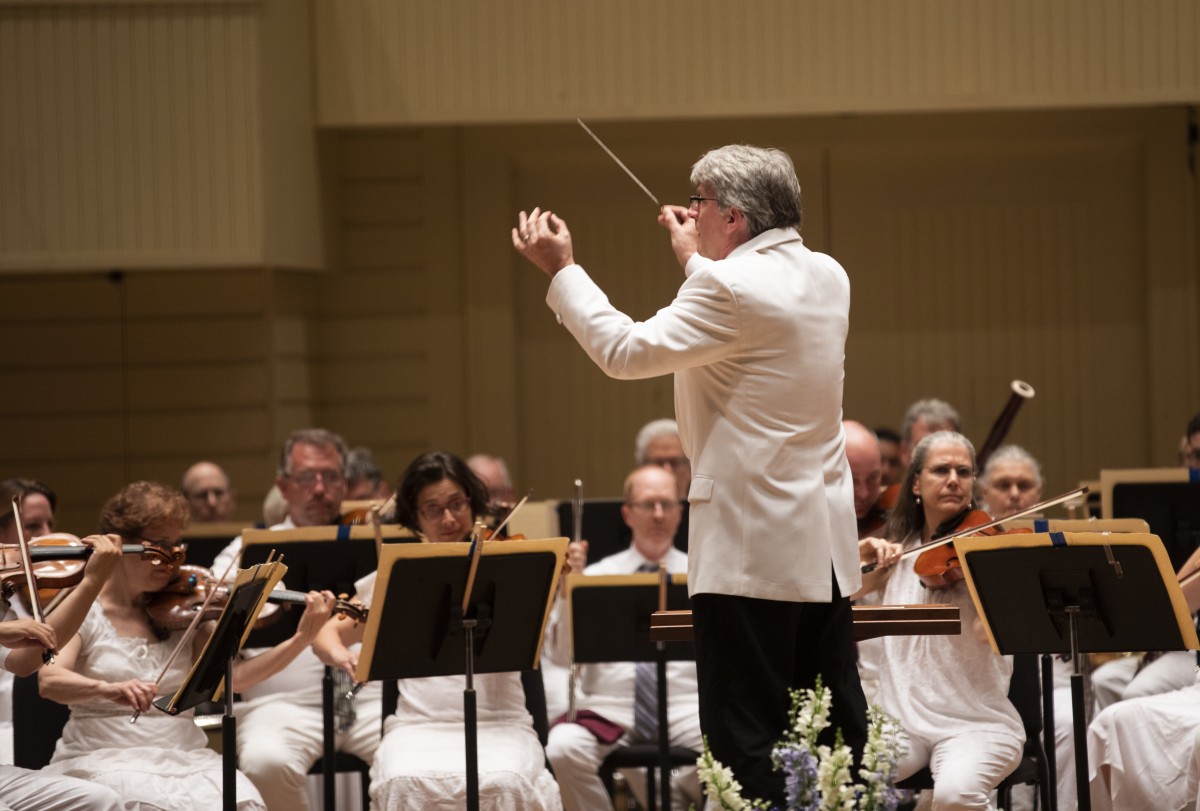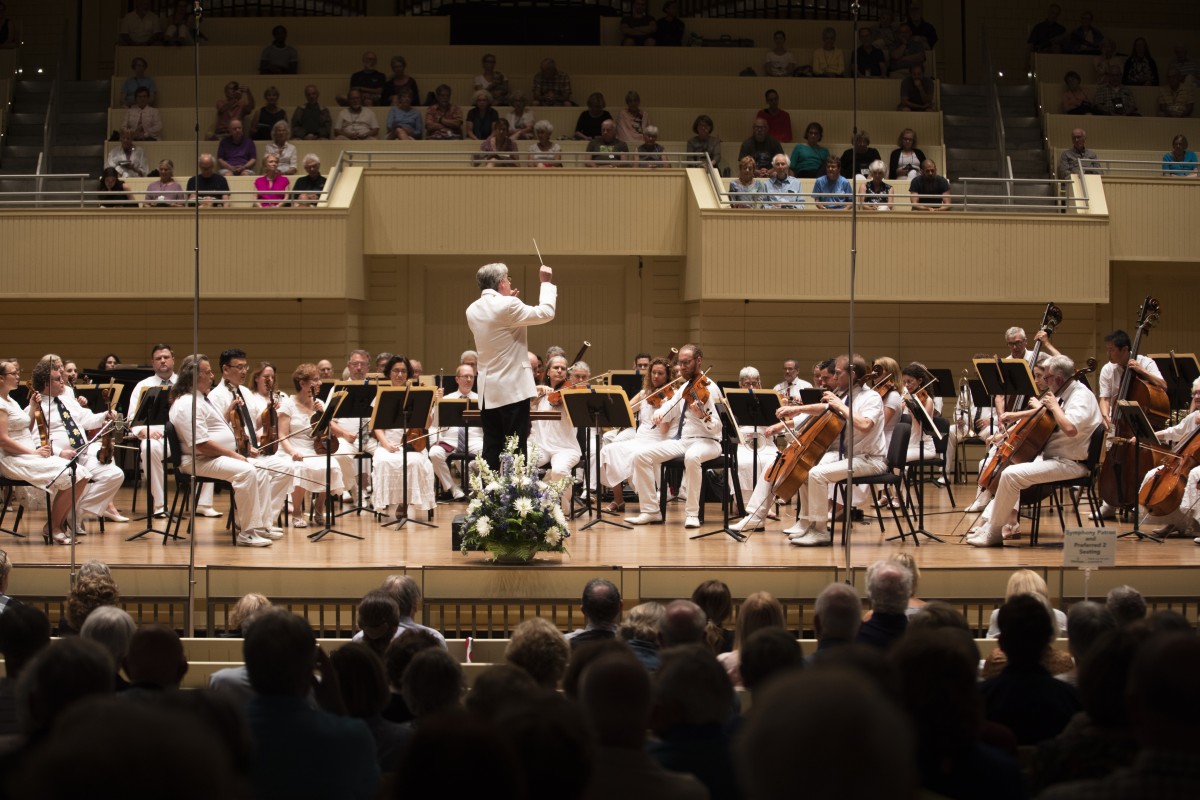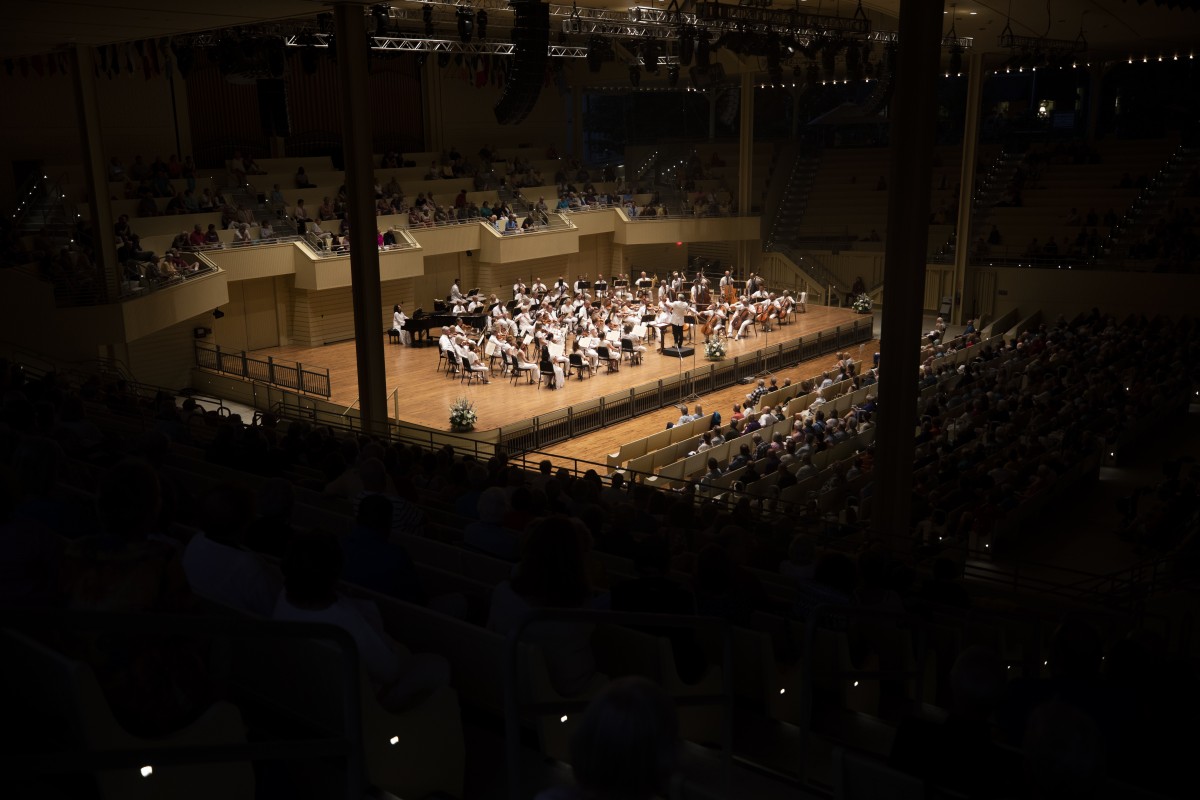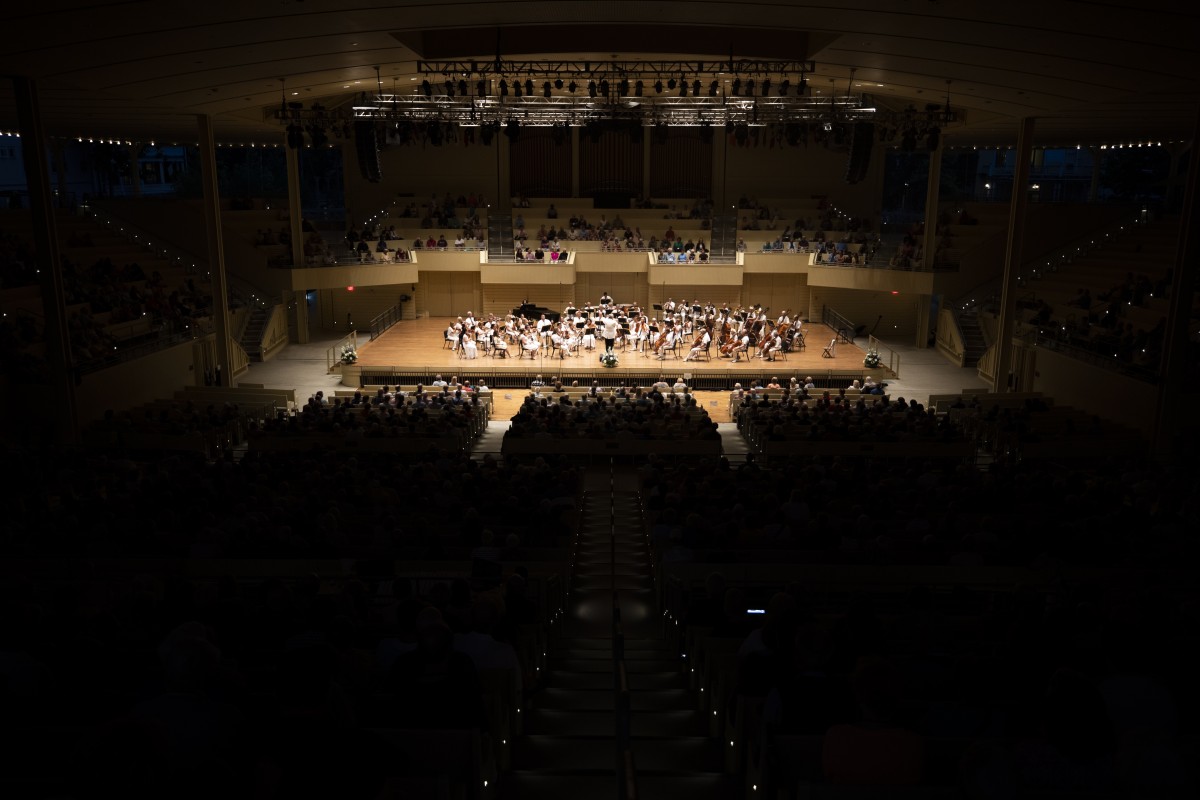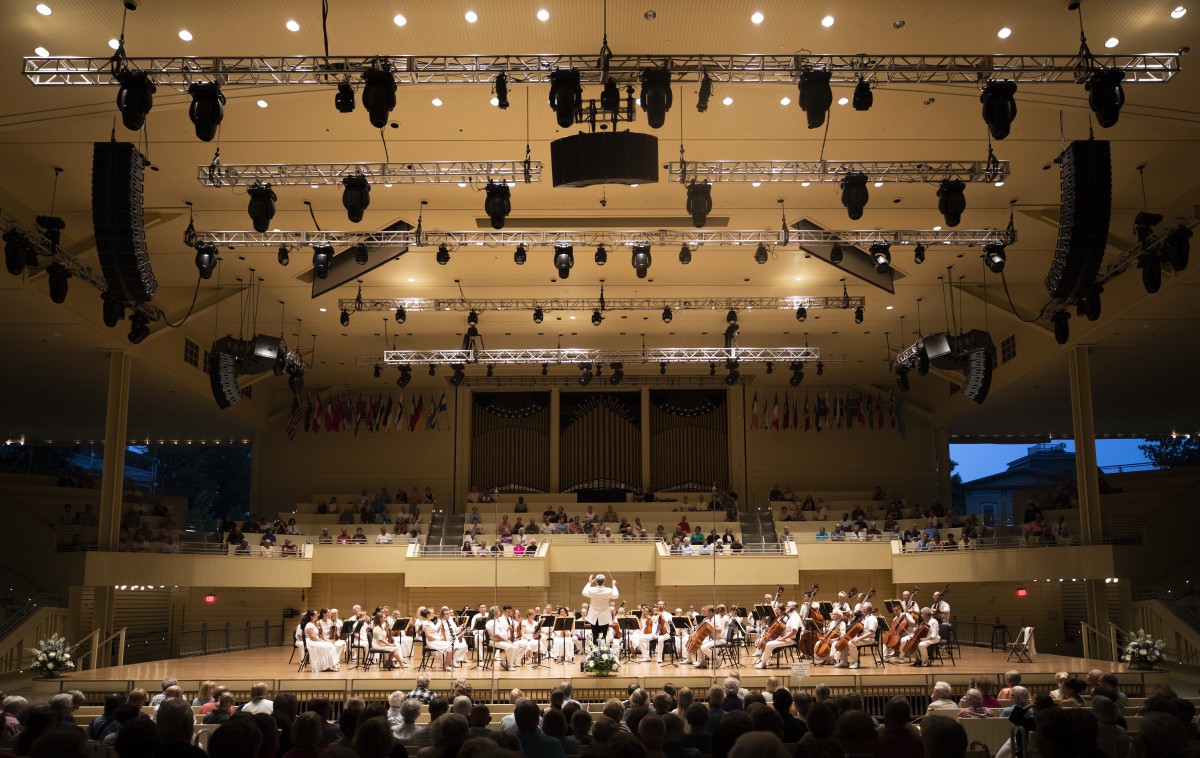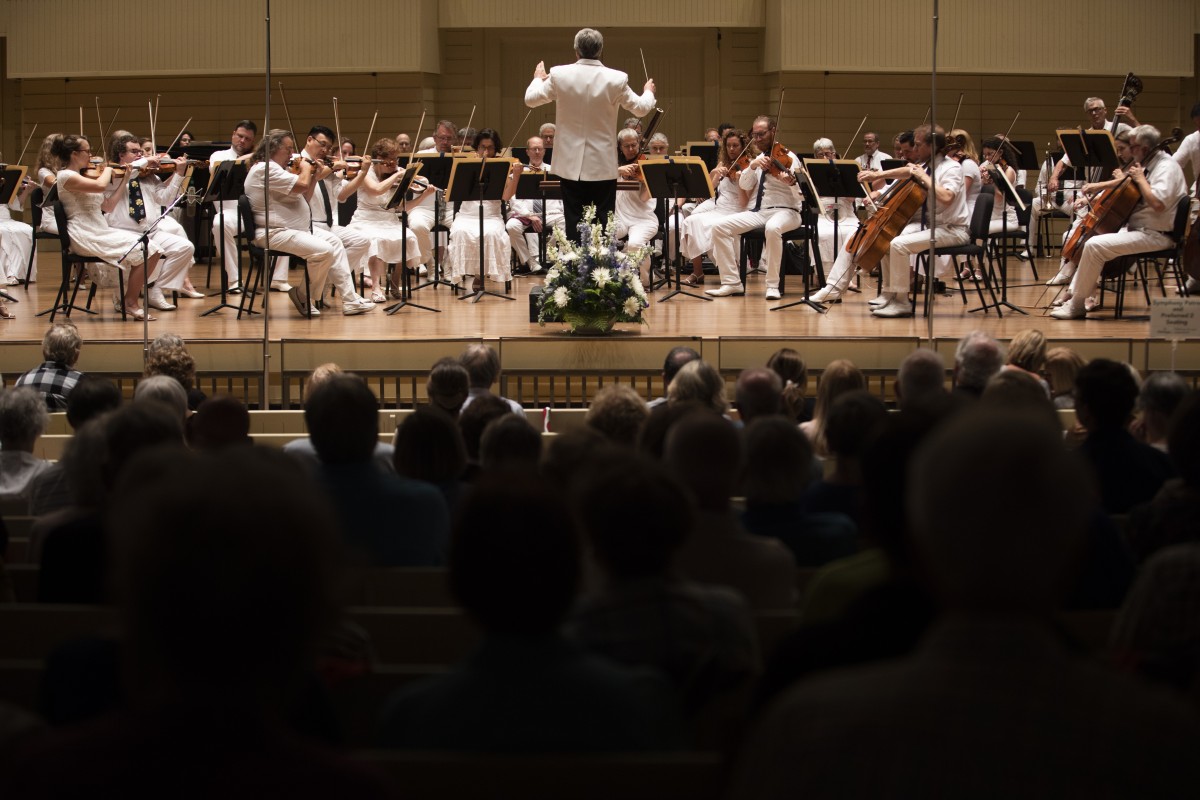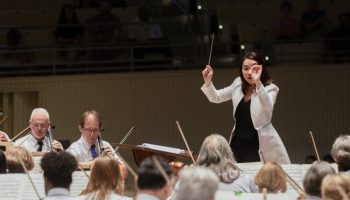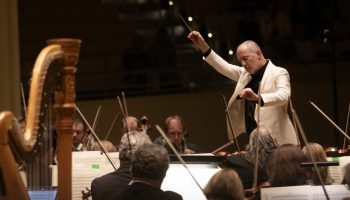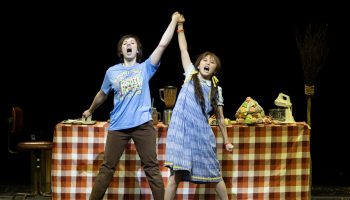Review by Tom Di Nardo
The third and final program of the Chautauqua Symphony Orchestra’s Beethoven Festival was a gem, three completely different works chosen cannily to show off the musicians’ laudable chops. Taking the Amphitheater’s podium was Timothy Muffitt, familiar to Institution regulars as the Music School Festival Orchestra’s music director.
Muffitt began by clarifying the unusual title of the opening work, Samuel Barber’s First Essay, by its definition: a work based on a single idea. From its entrance by the violas, cellos and basses, its throbbing theme built from strings to brass outbursts through a central triumphal climax, then shifted to a fleet development section to show off every section of the orchestra. Muffitt clearly loves the piece, and a timely lightning bolt and delayed thunder dramatized the theme’s quiet fadeout.
One can only imagine the excitement of the 28-year- old composer when this work (and the now-ubiquitous Adagio for Strings) were both played on a radio broadcast by the NBC Symphony under Arturo Toscanini. It launched the long and fertile career of this great American voice.
Two of the orchestra’s musicians, assistant principal second violinist Simon Lapointe and principal violist Christopher Fischer, were impressive soloists in Mozart’s sublime Sinfonia Concertante in E-flat, K. 364. Friends of this writer, who often perform this piece on tour, insist that it’s the most perfectly written piece they know, and it would be hard to argue the point. Its provenance is uncertain, since it was published 10 years after the composer’s death with no clues, but many scholars believe Mozart wrote it for himself to play on viola with his violinist father, Leopold.
Muffitt began the piece at just the right sprightly tempo, setting the stage with the formal opening for the two soloists to take over. Mozart suggested a special tuning (scordatura) to give the darker sound of the viola more volume relative to the bright violin, though many players these days leave the sonic balance to the conductor. In passages where the two played against the orchestra, the viola was noticeably fainter than the violin, but the orchestra is deftly held back during most of their solo playing.
In Mozart’s day, the solo cadenzas near the end of movements were usually improvised by the performers, but in this work he found it important to write them out. In those cadenzas during the first two movements, their lines embellished, echoed and spiraled around each other, played superbly by this duo. Horns in this work were accurate, hearty punctuations to this masterpiece.
The second movement’s songful melody, deeply emotional and heartfelt, is one of Mozart’s finest creations. In this section, and the rollicking finale with returning melody, the sweetness of Lapointe’s violin and the mellowness of Fischer’s viola gave an interplay like two dear friends holding a tender conversation which, of course, they were. At their bows, they were given flowers, with Fischer’s white-dressed young daughter giving him a huge, deserved hug.
The valuable concept of having soloists from an orchestra’s roster has intensified in recent years. Concertgoers are often familiar with the immensely talented principal players in major orchestras, and would just as soon hear them as well-known touring soloists. It’s simply a season highlight for an orchestra member because there are 99 knowledgeable critics behind them; there’s the one-time juice of a special occasion for a performer and his/her colleagues, while the big-name, expensive player — gifted, to be sure — has played the work in 20 cities. This is smart business, good for morale and audience connection, with proof demonstrated on Thursday, July 26.
Beethoven’s fourth symphony was the colossus on the program, though it has the smallest instrumentation of all nine. Reams have been written about the relative neglect of the fourth, and the curiously smaller scale of the even-numbered ones between the titanic third, fifth, seventh and ninth. A look at his original manuscripts, with cross outs and black marks all over the page, elicit wonder at how the copyists ever deciphered his scrawl. They show his constant struggle to improve it, to make it more powerful; it was a constant battle for him, probably three-quarters deaf while writing the fourth, while the miraculous Mozart wrote his music out in ink. One review of the premiere talked about the symphony “which has pleased, at most, his most fanatical admirers.” So much for critics.
That marathon premiere, at a prince’s palace in 1907 Vienna, is hard to imagine, with Beethoven conducting his first, second, third and fourth symphonies, arias from Fidelio and then soloing in his Fourth Piano Concerto.
Muffitt began the ominous, almost mysterious introductory section, which Weber exaggerated by saying it “was a way to spread a few notes over five minutes.” He must have been expecting an initial outburst, which comes soon enough in a typically forceful theme and inevitable evolving structure, with the conductor retaining the momentum.
It initially seemed as though the second movement began too slowly, but Muffitt was able to retain the many tempo shifts and organic transitions, keeping the flow in a movement that some conductors drag and make it seem too long. The third movement scherzo with its roller coaster theme and spirit of fun, which Beethoven puzzlingly called just a minuet, has three reiterations of its trio in the center, with the final one just emphatically, and suddenly, stopping.
The work’s finale, with thundering, incisive rhythms and the rough graciousness of its themes, altering and shifting in kaleidoscopic imagination, was played exuberantly, with expressive wind playing throughout. The CSO sounded outstanding here in these headlong tempos, with a final coda that typically feels as though Beethoven didn’t want it to end. Muffitt and the CSO clearly were of one mind here, an outstanding offering to end the Beethoven Festival.
Postscript: When Beethoven was writing this work at the summer castle of Bohemian Prince Lichnowsky, he was asked to play his latest works for French officers, left over from the bitter Napoleonic occupation of Vienna. The next day, the outraged composer walked away from the castle, leaving this message:
“Prince!
What you are, you are by accident of birth. What I am, I am through myself. There have been and will be thousands of princes. There is only one Beethoven.”
Amen.
Tom Di Nardo has written on the arts for the PhiladelphiaDaily News since 1982. His recent books include Listening to Musicians: 40 Years of the Philadelphia Orchestra and Performers Tell Their Stories: 40 Years Inside the Arts. He has also written Wonderful World of Percussion: My Life Behind Bars, a biography of legendary Hollywood percussionist Emil Richards.



